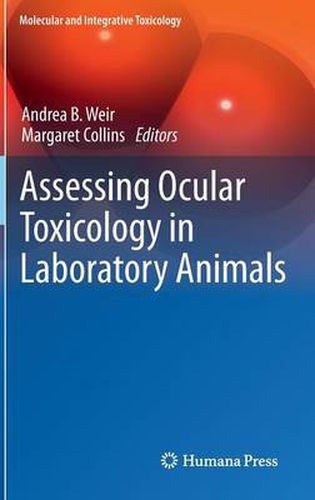Readings Newsletter
Become a Readings Member to make your shopping experience even easier.
Sign in or sign up for free!
You’re not far away from qualifying for FREE standard shipping within Australia
You’ve qualified for FREE standard shipping within Australia
The cart is loading…






This title is printed to order. This book may have been self-published. If so, we cannot guarantee the quality of the content. In the main most books will have gone through the editing process however some may not. We therefore suggest that you be aware of this before ordering this book. If in doubt check either the author or publisher’s details as we are unable to accept any returns unless they are faulty. Please contact us if you have any questions.
Ocular toxicity is routinely assessed in toxicology studies conducted for regulatory purposes. Ocular anatomy and physiology and the assessment of ocular toxicity itself can be challenging to scientists involved in the safety assessment of pharmaceuticals, pesticides and other agents. Anatomical and physiological differences between species can impact the nature of ocular effects observed following intended or unintended exposure of ocular tissues to xenobiotics. Ocular Toxicity in Laboratory Animals provides a concise reference addressing ocular anatomy and physiology across species that will enhance the design and interpretation of toxicology studies conducted for regulatory purposes.
The book provides an overview of routine and advanced techniques that are used to assess ocular toxicity including slit lamp biomicroscopy, indirect ophthalmoscopy, electrophysiology and imaging methods for the anterior and posterior segments of the eye. Additionally, the book defines the regulatory expectations for pharmaceuticals intended to treat ocular diseases and for other non-pharmaceutical regulated chemicals. With contributions from experts in the field, Ocular Toxicity in Laboratory Animals is an authoritative, accessible guide for toxicologists and other scientists involved in conducting toxicology studies for regulatory purposes and/or reviewing data from such studies.
$9.00 standard shipping within Australia
FREE standard shipping within Australia for orders over $100.00
Express & International shipping calculated at checkout
This title is printed to order. This book may have been self-published. If so, we cannot guarantee the quality of the content. In the main most books will have gone through the editing process however some may not. We therefore suggest that you be aware of this before ordering this book. If in doubt check either the author or publisher’s details as we are unable to accept any returns unless they are faulty. Please contact us if you have any questions.
Ocular toxicity is routinely assessed in toxicology studies conducted for regulatory purposes. Ocular anatomy and physiology and the assessment of ocular toxicity itself can be challenging to scientists involved in the safety assessment of pharmaceuticals, pesticides and other agents. Anatomical and physiological differences between species can impact the nature of ocular effects observed following intended or unintended exposure of ocular tissues to xenobiotics. Ocular Toxicity in Laboratory Animals provides a concise reference addressing ocular anatomy and physiology across species that will enhance the design and interpretation of toxicology studies conducted for regulatory purposes.
The book provides an overview of routine and advanced techniques that are used to assess ocular toxicity including slit lamp biomicroscopy, indirect ophthalmoscopy, electrophysiology and imaging methods for the anterior and posterior segments of the eye. Additionally, the book defines the regulatory expectations for pharmaceuticals intended to treat ocular diseases and for other non-pharmaceutical regulated chemicals. With contributions from experts in the field, Ocular Toxicity in Laboratory Animals is an authoritative, accessible guide for toxicologists and other scientists involved in conducting toxicology studies for regulatory purposes and/or reviewing data from such studies.